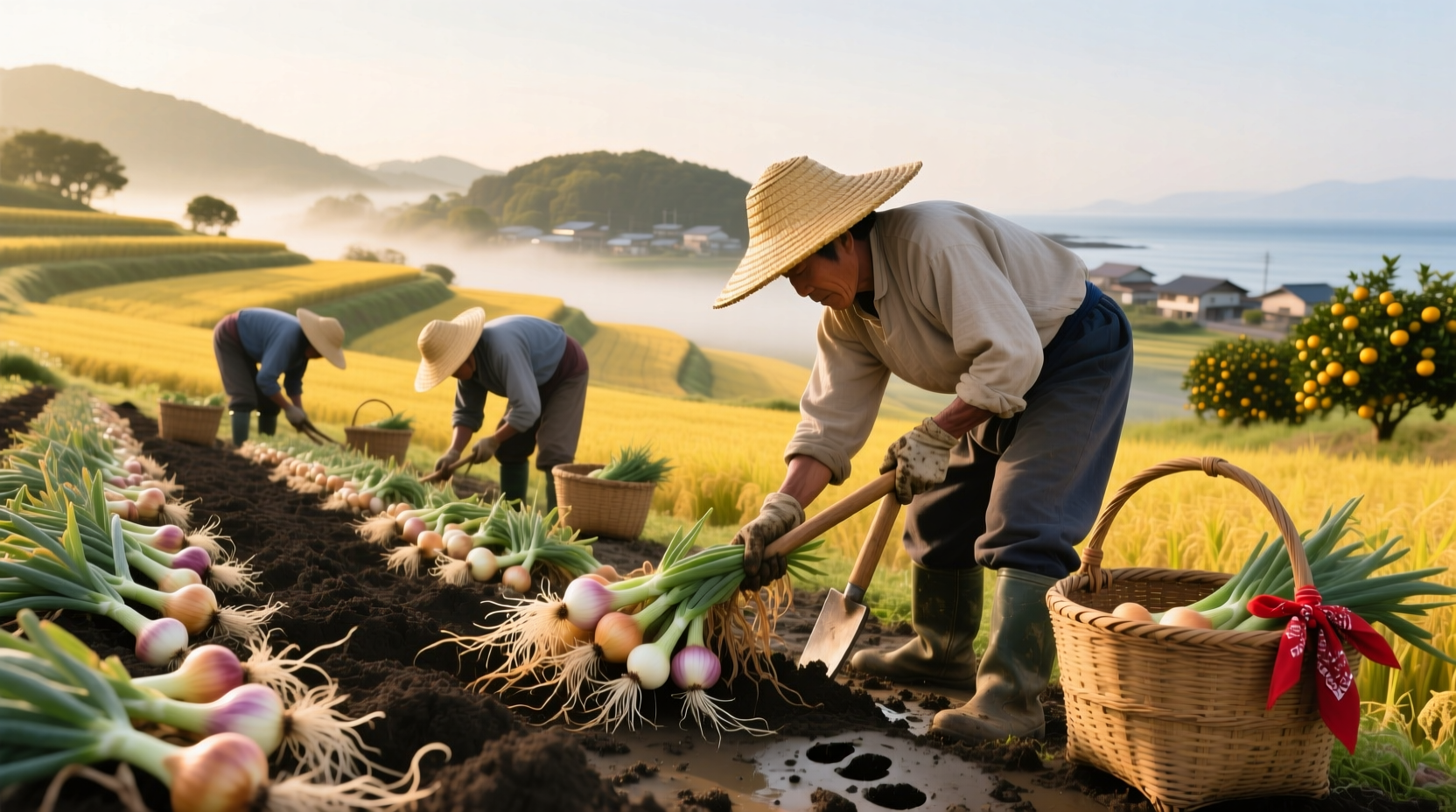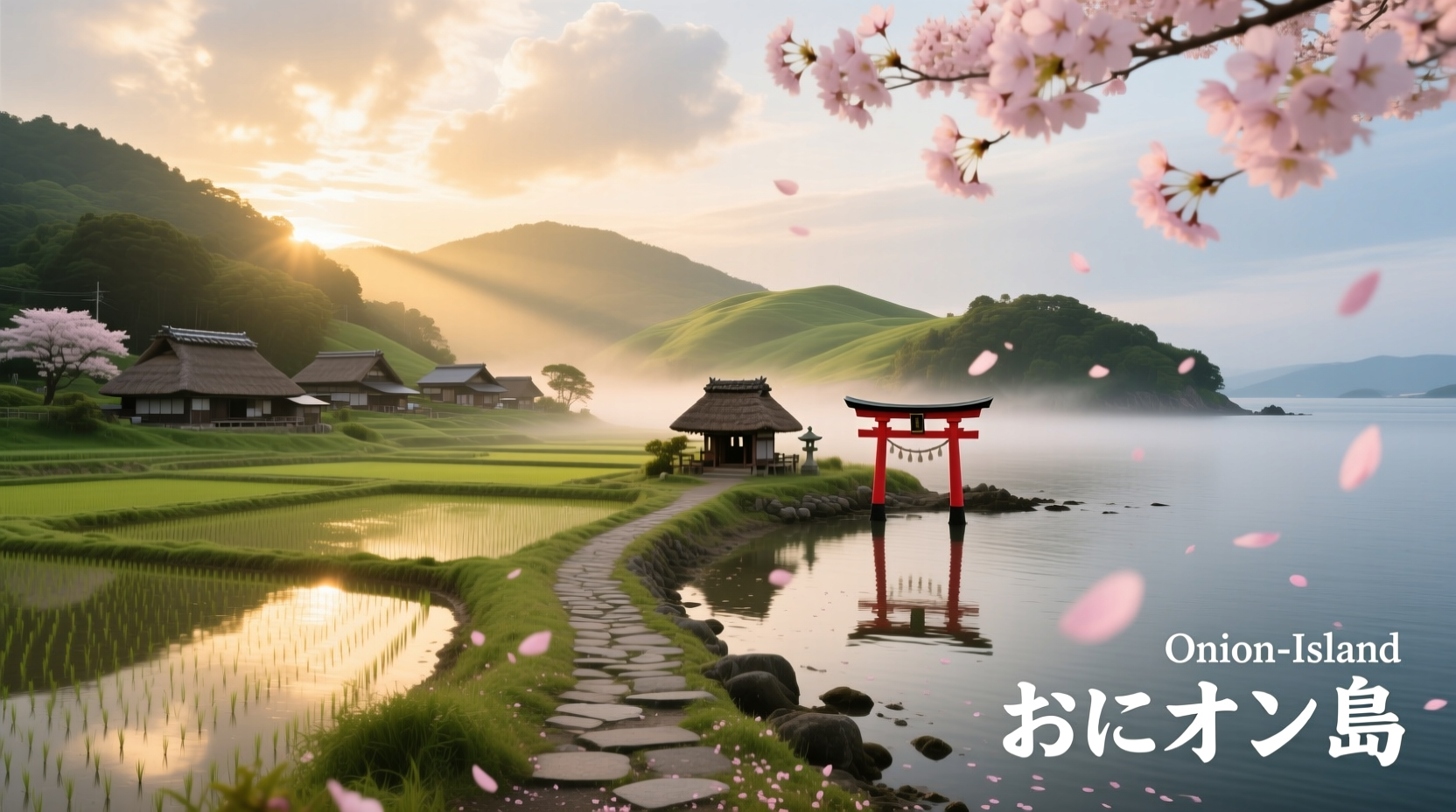When travelers search for “onion island Japan,” they're typically seeking information about Shōdoshima, the agricultural heartland responsible for a significant portion of the country's onion supply. Despite not being officially named “Onion Island,” this designation has become deeply embedded in culinary circles and agricultural discussions throughout Japan.
Shōdoshima: The Unofficial Onion Island of Japan
Nestled in the Seto Inland Sea between Honshu and Shikoku, Shōdoshima Island has cultivated a reputation that far exceeds its modest size. The island's connection to onions began in the Meiji period (1868-1912) when farmers first experimented with Western crops. What started as a small-scale agricultural experiment has blossomed into a thriving industry that defines the island's economic and cultural identity.
The island's nickname “Onion Island” isn't just marketing hype—it's grounded in agricultural reality. Shōdoshima's unique combination of mild climate, abundant sunshine, and well-drained volcanic soil creates ideal growing conditions for onions with exceptional sweetness and storage qualities. These environmental factors produce onions with lower pungency and higher sugar content than those grown in other regions.
Why Shōdoshima Dominates Japan's Onion Production
Several key factors contribute to Shōdoshima's status as Japan's onion powerhouse:
- Microclimate Advantage: The Seto Inland Sea creates a sheltered environment with minimal typhoon impact and consistent temperatures
- Soil Composition: Volcanic ash deposits mixed with alluvial soil provide excellent drainage while retaining necessary nutrients
- Traditional Farming Knowledge: Multi-generational expertise in onion cultivation techniques specific to the region
- Harvest Timing: Strategic planting schedules yield onions during optimal market windows
| Production Metric | Shōdoshima Contribution | National Context |
|---|---|---|
| Annual Onion Production | Approximately 35,000 tons | Represents ~20% of Japan's total |
| Harvest Season | April-June (main crop) | Supplies market before other regions |
| Farming Households | Over 1,200 | Majority of island's agricultural workforce |
| Economic Impact | Estimated ¥15 billion annually | Primary economic driver for the island |
According to data from the Kagawa Prefectural Government's Agricultural Department, Shōdoshima's onion production has remained consistently high for over three decades, with only minor fluctuations due to weather patterns. The island's farmers have developed specialized cultivation techniques that maximize yield while maintaining exceptional quality standards.
Shōdoshima's Signature Onion Varieties
While most Japanese onions come from a few standard varieties, Shōdoshima has developed distinctive strains prized for their culinary properties:
- Shōdoshima Early: Harvested in April, known for exceptional sweetness and mild flavor, perfect for raw applications
- Setouchi Gold: A proprietary variety developed specifically for the region's conditions with superior storage capabilities
- Island Red: A specialty purple onion with vibrant color and complex flavor profile used in premium restaurants
These varieties have earned Shōdoshima onions a Protected Geographical Indication (PGI) status from the Japanese government, recognizing the unique qualities derived from the island's specific terroir. This designation helps protect the reputation of authentic Shōdoshima onions in both domestic and international markets.

From Field to Table: The Onion Journey
Understanding how Shōdoshima onions move from farm to consumer reveals why they're so highly valued. The process begins with careful seed selection in winter, followed by planting in January-February. The harvest season in April-June is a critical period when farmers work quickly to gather the mature bulbs before summer rains.
Unlike mass-produced onions from other regions, Shōdoshima farmers employ traditional curing methods that enhance flavor development. The bulbs are dried in shaded, well-ventilated structures for 2-3 weeks, allowing natural sugars to concentrate while maintaining optimal moisture levels. This meticulous post-harvest handling contributes significantly to the onions' distinctive sweetness.
Chefs across Japan specifically request Shōdoshima onions for dishes where onion flavor plays a starring role. The mild yet complex flavor profile makes them ideal for:
- Traditional Japanese dishes like okonomiyaki and takoyaki
- French cuisine applications where raw onion is featured
- Pickling preparations that showcase the onion's natural sweetness
- Broths and stocks where clean onion flavor is essential
Experiencing Onion Culture on Shōdoshima
For travelers interested in Japan's agricultural heritage, Shōdoshima offers unique opportunities to engage with its onion culture. The island hosts the annual Shōdoshima Onion Festival every May, featuring cooking demonstrations, farm tours, and tastings of onion-based specialties you won't find elsewhere.
Visitors can tour working onion farms through the Shōdoshima Tourism Association's agricultural experience program. These guided tours provide insight into traditional cultivation methods while allowing participants to harvest their own onions. Many local restaurants feature seasonal menus highlighting the island's signature crop, with dishes like onion tempura, caramelized onion jam, and even onion ice cream.
Challenges and Innovations in Onion Farming
Like many agricultural regions, Shōdoshima faces challenges that threaten its onion production legacy. Climate change has introduced unpredictable weather patterns, while an aging farming population creates succession concerns. However, innovative approaches are helping preserve this vital industry:
- Development of climate-resilient onion varieties through the Kagawa Agricultural Research Center
- Implementation of precision agriculture techniques using soil moisture sensors
- Youth recruitment programs to attract new farmers to the industry
- Value-added product development (onion jams, sauces, and seasonings)
According to the Japan Ministry of Agriculture, Forestry and Fisheries, Shōdoshima's cooperative farming model has proven particularly effective at adapting to market changes while maintaining quality standards. The island's agricultural cooperative system ensures consistent quality control and provides valuable support services to individual farmers.
Bringing Shōdoshima Onions to Your Kitchen
Even if you can't visit Shōdoshima, you can still experience its famous onions. Look for packaging that specifically mentions “Shōdoshima” or “Kagawa Prefecture” when purchasing onions in Japanese supermarkets, particularly during April-June. High-end grocery stores in major cities often feature specialty displays highlighting the island's produce during peak season.
When selecting Shōdoshima onions, look for firm bulbs with dry, papery skins and no soft spots. Their distinctive sweetness means they can be used more generously in recipes than standard onions. For the best flavor experience, try them raw in salads or lightly cooked to preserve their delicate sweetness.











 浙公网安备
33010002000092号
浙公网安备
33010002000092号 浙B2-20120091-4
浙B2-20120091-4